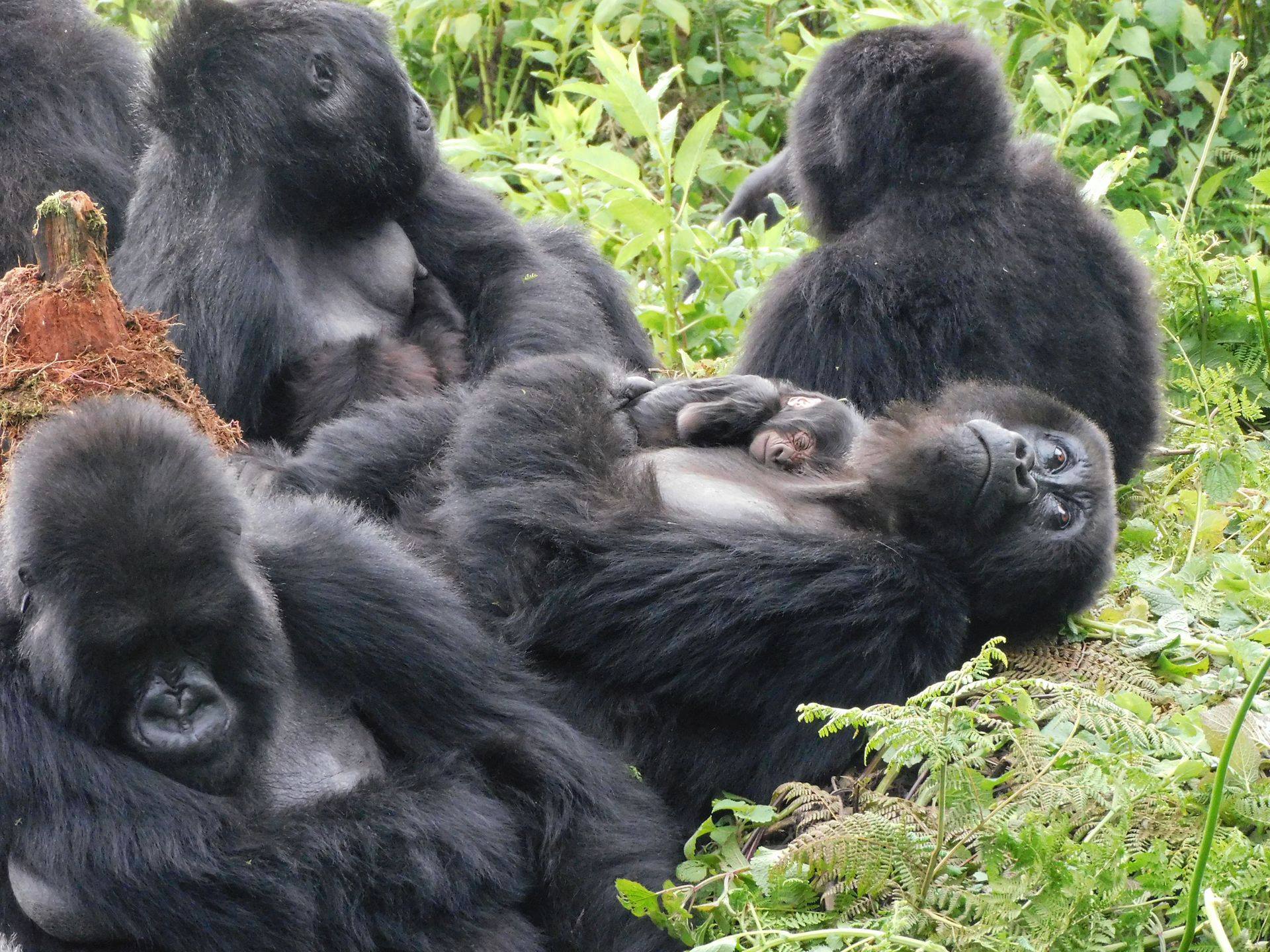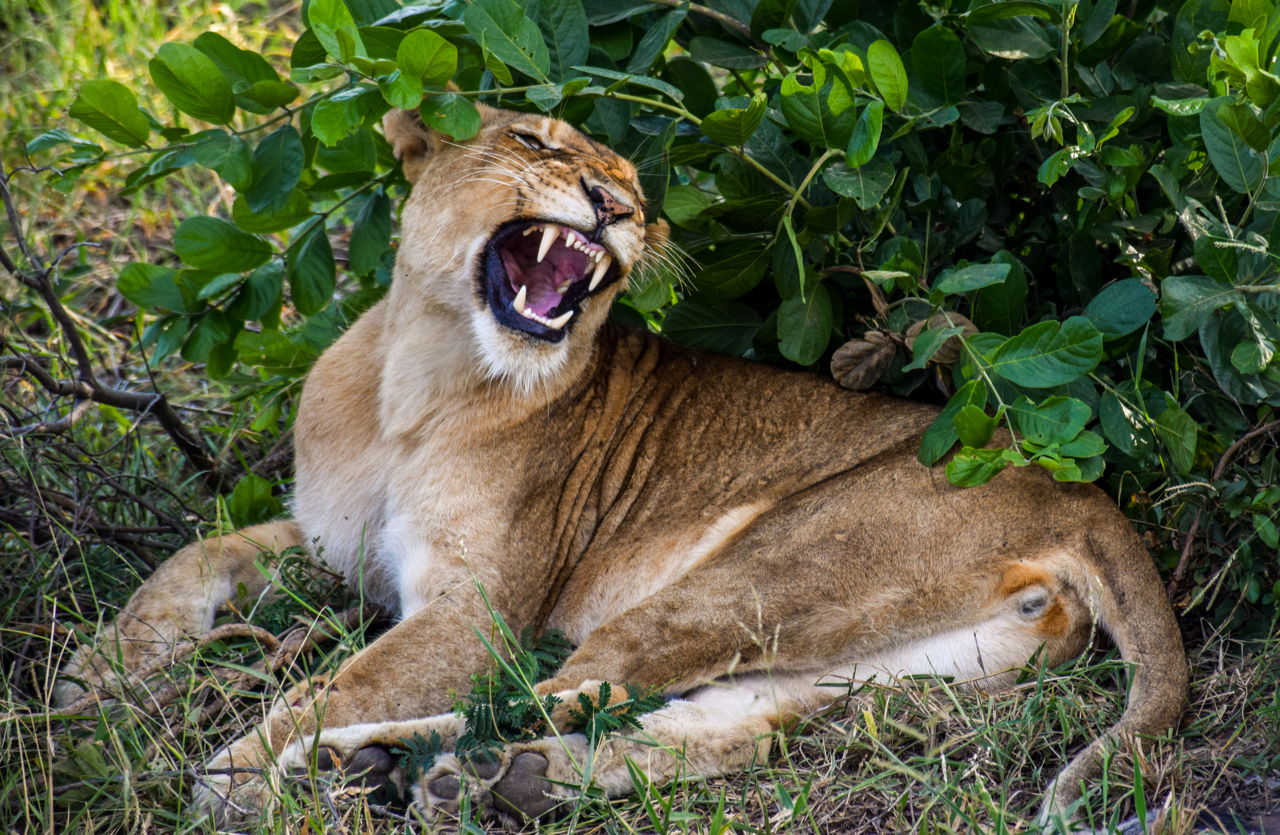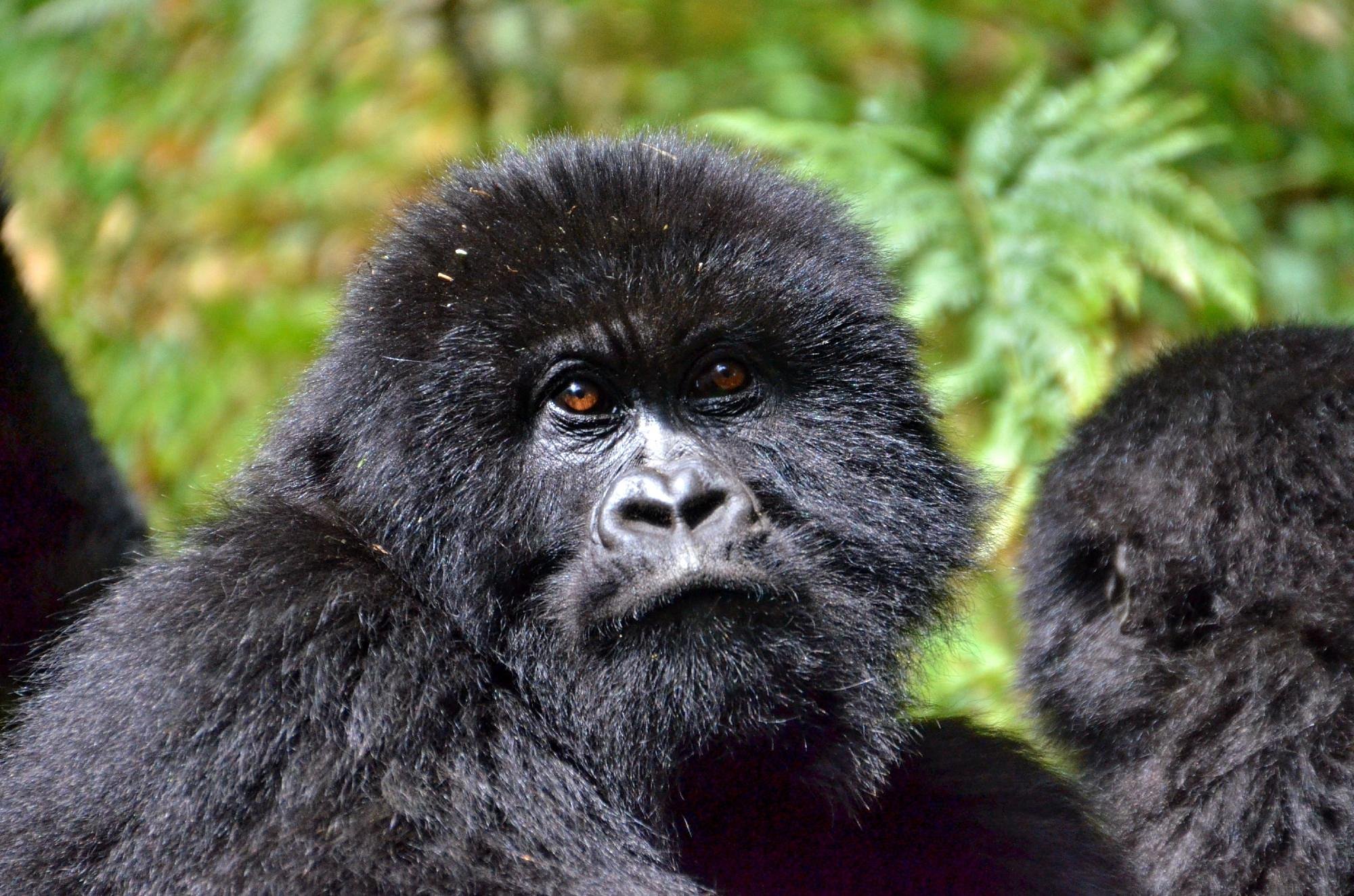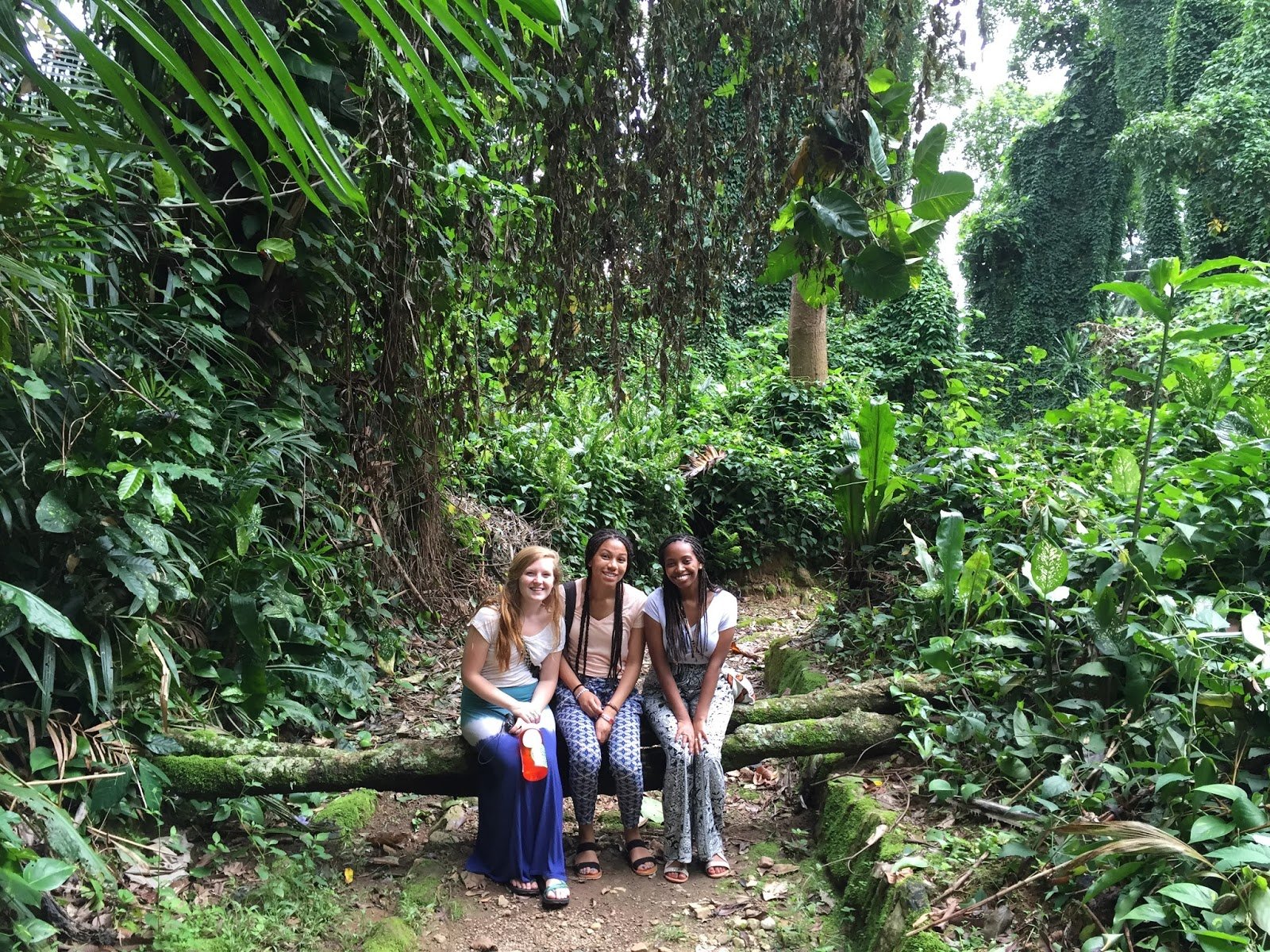
Bwindi Mountain Gorilla Groups
Bwindi mountain gorilla groups -Full list, Names | Gorilla trekking
How many gorilla groups are in Bwindi National Park? Here is a full list of Bwindi mountain gorilla groups, size, names and their leadership as well as the different sectors to visit for gorilla trekking.
Mountain gorillas like humans live in families/groups. These large apes exist only in the 4 National Parks which include Bwindi Impenetrable National Park in Southwestern Uganda.
Bwindi Impenetrable National Park alone holds over 459 mountain gorillas with about 50 gorilla groups. Of the 50 families of mountain gorillas, about 24 of them can be tracked in a group of 8 visitors per day or area already habituated.
What is a gorilla group?
A gorilla group is also referred to as a troop/band/family. By nature, gorillas live in groups or families each comprising 5-10 members/even 50 which are led by a mature silverback. In a single gorilla group, there can be females, juveniles and black back gorillas.
A full list of Bwindi Mountain Gorilla Groups available for gorilla trekking per sector
Buhoma area
Buhoma is the location for the main Park Headquarters, it is located on the northwestern side of the forest its where most of the accommodation at the park are located and buhoma has three gorilla habituated groups one is;
Rushegura
Rushegura is regarded as the number one group visited out of Buhoma to the west of the forest; it is among the larger Groups of Gorillas with treks usually starting out on foot from the park headquarters.
The group was formed in 2002 for gorilla tracking within the buhoma region and a determined silverback named Mwirima separated from the Habinyanja group with seven other family members forming their group.
The group has succeeded since under his leadership although he died a couple of month back and now is led by the blackbuck Kabukojo with now 19 members.
The group has so many adult females about 6, 3blackbuck and 5 juvenile and 5 infants the group has great reproductive potential and mating is regularly observed.
Katwe gorilla group: This is one of the newest groups to undergo habituation and currently, it is open for gorilla trekking in Bwindi National Park. It has a composition of about 6 members that are led by a dominant silverback.
Mubare Gorilla Group also called the M Group:
This group is located in the Buhoma region of bwindi and it is known as the first habituated gorilla group in Uganda and the oldest being created in 1998.
At first the group had 12 family members how ever some members moved to other different groups. Others died during fights including the leader, Ruhondeza and the group reduced to only 5 family members.
In 2013 four other gorillas have joined the Mubare gorilla family and there are now nine family members as members of other groups have become part of the Mubare group recently.
When the group reduced to 5 members, the tour operator and the visitors avoided using the group although this came to pass as the group now has five members with a strong silverbuck who has now taken charge of the group.
The word Mubare refers to the area where the group was first discovered in Bwindi Impenetrable Forest. This group is very easy to track as they can be tracked from the Buhoma area of Bwindi Impenetrable National Park.
Habinyanja Gorilla Group also referred to as H Group:
Habinyanja group lives in Buhoma area of Bwindi. It happened to be one of the earlier habituated groups in the Buhoma area of Bwindi Impenetrable Forest.
It was habituated in 1997 and uncountable visitors around the world have come to track in this group to stay at least one hour with the gorillas in the ancient forest.
Habinyanja Group derives its name from a Rukiga word “Nyanja” which means “a place with water” The group was first discovered near a swamp in Bwindi Impenetrable.
To arrive at the starting point, you sometimes need to drive for 45 minutes towards the neck or 30 minutes to reach the trail head at Nyamishaba village.
Currently speaking the group has 18 members with Makara including the dominant silverback that is responsible to take charge of the group.
It usually takes a full day – five hours or more to track the Habinyanja Gorilla Group. They daily move and roam over a wide range in the forest so some level of physical fitness is needed.

Bwindi Mountain Gorilla Groups in Ruhija Area
This sector is in the eastern part of Bwindi and has several gorilla groups let us examine one by one.
The Oruzogo Gorilla Group:
Oruzogo group can best be tracked from the Ruhija area of Bwindi Impenetrable Forest. It is one of the newly habituated gorilla groups in Bwindi National Park and it was originally sighted with 23 gorilla members including 2 silverbacks.
Oruzogo is led by a dominant Silverbuck called Tibirikwata who dominates the group. It is one of the popular visited groups within the park not because of the size but due to the playful energy exhibited by the juveniles and toddlers.
It is recommended to inquire from your tour operator to book for you the lodge around Ruhija area. A short briefing about the gorilla trekking begins early morning and includes allocation of gorilla families plus the park ranger guides.
Bitukura Gorilla Group
It takes more than two years to habituate gorillas however the Bitukura group was ready to receive visitors within 15 months making it the most group to learn quickly. The group currently has 14 members.
The group consists of four silverbacks led by dominant Silverback Ndahura. At the time of formation, Ndahura featured among the youngest silverbacks and its group lost three members who joined other groups. Slowly, the group recovered with a newborn arrived recently on the scene and the family generally looks happy.
In order to track the Bitikura Gorilla Group, it is best to stay in the Ruhija area of the park, if you do stay in Buhoma you have to leave quite early in order to make the gorilla tracking orientation in time.
Bwindi Mountain Gorilla Groups in Rushaga sector
Rushaga is where you can find the highest number of gorilla families. This sector is found in the Southern side of Bwindi Impenetrable National Park.
Nshongi Gorilla Group
This is an interesting group to track in Bwindi and it is one of the bigger familiarized gorilla groups. Originally, it comprised of 36 members but currently, about 18 individuals live in this family group. Nshongi gorilla group was named after the River Nshongi which flows in that area.
Nshongi group is usually found in a large forested area where you can see other primates such as the black and white colobus monkey, baboons chimps species of birds, butterflies and rich thick rainforest of bwind so this group is worth visiting
Mishaya Gorilla Group
This is another group in the Rushaga area where gorillas can be tracked in their natural settings with an ever increasing number of gorilla families.
This group separated from the Nshongi gorilla group and presently this group consists of about 10 gorilla members by the time of writing, although the group is subjected to change at any time like in human as new members tend to be born or die.
The leader of Mishaya Gorilla Group in Bwindi Impenetrable Forest was reported dead last week and he was about 28 years. The group was in a battle with another un-habituated gorilla group and some members of the group were treated for injuries.
Silverback Mishaya had lived only half his life in the Bwindi National Park in southwestern Uganda.
Kahungye Gorilla Group
This is another Rushaga gorilla group being made ready for tracking in 2001. The name Kahungye comes from a hill in the Rushaga area where the gorillas were discovered.
The group has family members of about 27 individuals that are very active and full of life, the family is led by a dominant Silverback Gwigi, which means “door” in the local language.
Kahungye gorilla group is accessible from Kisoro within a few hours and about 9-10 hours drive from Kampala capital city. You can stay at Gorilla Safari Lodge, or Kisoro Traveller’s rest In if interested.
Busingye Gorilla Group
This is another group found in the Rushaga sector of the park and they are tracked safely in their natural habitat. The Busingy gorilla group is a newest family which was ounce part of Kahungye gorilla group although they split and form their group an event that happened in August 2012.
By the time of writing the group had 9 members led by a dominant male silverback. Since it’s a new group critical observation is carried out to see whether one time this group would go back to Kahunge gorilla group but this seems not to happen.
Bweza Gorilla Group
This is also one of the newly habituated gorilla groups which were created in the mid 2012. It broke away from the Nshongi gorilla group family, it set up a household in the Rushaga area of Bwindi Impenetrable Forest. It broke away because of the enormous size of the Nshongi group and the increasing number of silverbacks.
This group was easy to habituate by the Uganda wildlife Authority since it had broken a way from a formerly habituated family. This group consists of 7 members comprising of (1 silverback, 3 adult females, 1 juvenile and 2 infants).
Bweza gorilla group is now ready to book because it is one of the versatile. It is one of the exciting groups one can visit in Bwindi.
Kutu:
This gorilla family dwells around the Rushaga in Bwindi Impenetrable Forest. It is comprised of 8 members with one silverback gorilla.
Mucunguzi gorilla family:
Consisting of 9 members, Mucunguzi is an interesting group to interact with in Bwindi National Park. It takes its name from Mucunguzi silverback gorilla.
Nkuringo sector of Bwindi Impenetrable Forest:
There are 3 gorilla groups in this area of Bwindi Impenetrable National Park.
Nkuringo Gorilla Group
This is another group which can be tracked safely in their natural habitat; this gorilla family was created in 2004. It is a drive of about 9-10 hours from the capital Kampala to this part of the park depending on stopovers you will make, weather conditions and the like.
The major reasons for the habituation of these gorillas were because of the problems they created for the local communities by destroying crops and other products. The community is now benefiting directly from tourism and it formed a protection for the gorillas as well.
Tracking in this Group takes a bit more energy and stamina so some level of physical fitness is called for and it is regarded as the toughest trek in Uganda.
Yet there are not many complaining about being exhausted, once you are in a jungle you can’t miss watching them and it is regarded as a not to be forgotten experience.
This gorilla family consists of 14 members including (4 silverbacks, 2 black backs, 3 adult females, 2 juveniles and 3 infants) and it was named after the Rukiga word for “round hill”. You will encounter uncommon gorilla twins in this group which today are toddler.
Christmas: This habituated gorilla group lives in Bwindi and features 9 members. This group is led by Christmas silverback gorilla.
Other habituated gorilla groups to find in Bwindi Impenetrable National Park include Rwigi, posho gorilla group, Tindatine group, Bunyindo gorilla group, Muyambi gorilla family and others.
Where is Bwindi National Park located?
Bwindi National Park is located in the far Southwestern Uganda along the rim of the rift valley. Bwindi Impenetrable National Park boundaries stretch over Southwestern districts of Uganda; Kabale, Kanungu, Rubanda and Kisoro.
What are the sectors in Bwindi National Park?
Bwindi mountain gorilla groups are distributed across the 4 major sectors in the park. These include Ruhija sector in the East, Buhoma to the North; then Rushaga and Nkuringo in the Southern area.




